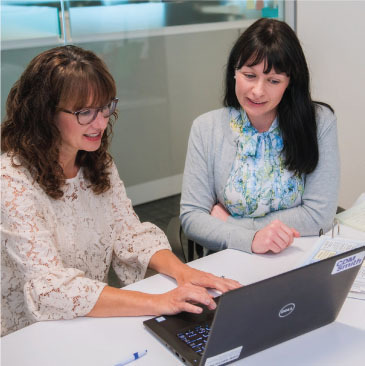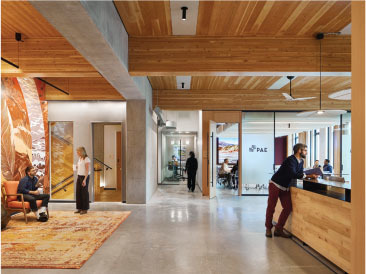December 2013
COMMUNITIES: PRIVATE PRACTIVE
LinkedIn: On Steroids?
BY RICH FRIEDMAN
 In my years of writing articles for AEC publications, I try not to rant too often. No one likes a crotchety consultant who complains but doesn’t offer solutions. But for months now, something’s been getting under my skin. What’s up with LinkedIn?
In my years of writing articles for AEC publications, I try not to rant too often. No one likes a crotchety consultant who complains but doesn’t offer solutions. But for months now, something’s been getting under my skin. What’s up with LinkedIn?
What used to be a unique, thoughtful business-to-business social networking tool has become an annoying, commoditized pain in the butt. Let me address a few of the observations I’ve made and share what I believe are LinkedIn’s most valuable applications for marketing, business development, and recruiting.
What Perplexes Me About LinkedIn
About six months ago, I started noticing multiple pings each day from folks wanting to “connect” with me. It’s becoming common practice in many industries to put LinkedIn profile links on Web site bio pages, which encourages more connections that you may not personally know. This is part of an overall shift in how people see LinkedIn as a social tool and not just a networking tool.
At about the same time, frequent e-mails started coming in from LinkedIn telling me things such as, “Congratulations! Your connection Bill Gates has endorsed you for the following skills and expertise.” I knew these people who endorsed me, but many I’ve never directly consulted with. While I appreciate these unsolicited endorsements, how could they credibly endorse me for a particular skill or expertise if they’ve never worked with me? Where’s Miss Manners’ Guide to LinkedIn Etiquette when you need it? When someone endorses me, am I expected to reciprocally endorse them? When and why did LinkedIn so swiftly transform its strategy from “pull” to “push” marketing?
While we’re on the subject, here are a few other things that bug me about LinkedIn use:
Generic Invitations. When you reach out to someone you’d like to connect with, don’t take the easy way out by selecting LinkedIn’s default invitation message: “I’d like to add you to my professional network on LinkedIn.” If you’re reaching out to a past, current, or potential client, a business partner, or a potential employee or employer, take the extra minute or two to personalize the message. If you don’t, you run the risk of recipients connecting the following dots for you:
- You’re too lazy or too busy to craft a customized message. Is that how you would conduct any targeted marketing, business development, or other business effort?
- You don’t get that LinkedIn is, first and foremost, a business tool, not the B-to-B equivalent of Facebook.
- People are busy. They want to know why you’re reaching out to them and not that you’re trolling for connections.
The LinkedIn Popularity Contest. How special do you feel when someone invites you to join their network of 500+? Be discriminating! Be strategic!
So, What’s the Real Value of LinkedIn?
Networking. Networking is LinkedIn’s sweet spot. If you’d like to gain access to someone else’s contacts and ask your “first-level” connection to make an introduction on your behalf, LinkedIn can be an incredibly valuable tool. Even making the equivalent of a “cold call” by tracking down someone you want to meet and reaching out to them in a thoughtful way can be simplified with LinkedIn. Did you know, for example, that you can search your network to see who’s a member of a particular professional association? Imagine the possibilities! For example, NSPE has a LinkedIn page with more than 5,000 members.
Marketing Intelligence. Join industry or user affinity groups and follow discussions and postings. Doing so enables you to stay current on trends and access useful articles and blogs. In general, it reveals pain points that your target audience is grappling with.
Market Positioning/Thought Leadership. When monitoring information and postings, chime in whenever you or your firm has an idea, resource, or best practice that can help a member of that LinkedIn community. This positions you as a thought leader among a broad group of users, most of whom you may not know or have in your CRM system. Better yet, start your own user group. Other suggestions: Submit thought-provoking questions to start a dialogue and announce important news and upcoming events, such as recent articles you’ve written and upcoming talks and workshops you’ll be presenting.
Recruiting. LinkedIn can be a very powerful recruiting tool. It’s amazing that I can search LinkedIn for qualified candidates in a particular region, with specific keywords in their title and skills listed in their profile, and then connect with them via LinkedIn or by contacting them at their place of employment. You can be even more strategic by searching a shortlist of competitors, combined with specific disciplines or capabilities, and see who pops up. Don’t forget, of course, that identifying candidates is only half the battle. You still need to rely on someone who is skilled at asking the right questions and selling the candidate on your firm and the opportunity.
Rich Friedman is president of Friedman and Partners, a marketing and management consulting firm serving the AEC industry. He can be reached at [email protected].


 Volunteering at NSPE is a great opportunity to grow your professional network and connect with other leaders in the field.
Volunteering at NSPE is a great opportunity to grow your professional network and connect with other leaders in the field. The National Society of Professional Engineers (NSPE) encourages you to explore the resources to cast your vote on election day:
The National Society of Professional Engineers (NSPE) encourages you to explore the resources to cast your vote on election day:






